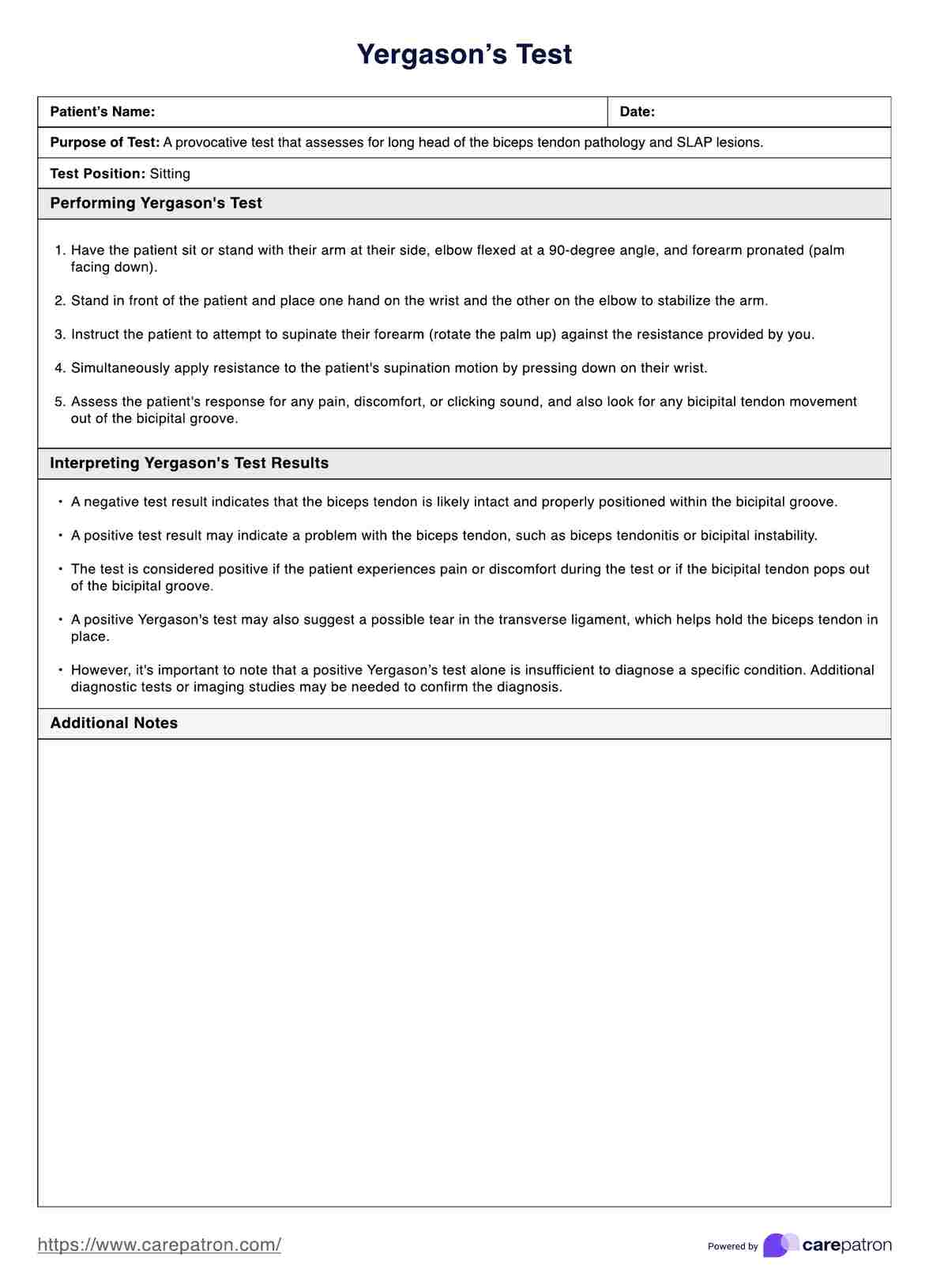A Yergason's Test typically takes a few minutes to perform during a clinical examination.

Yergason's Test
Learn about the Yergason Test, one of the clinical examination tests used to diagnose shoulder injuries. Download a free printable template and see an example.
Use Template
Yergason's Test Template
Commonly asked questions
The Yergason's Test is commonly used by healthcare providers, including physicians, physiotherapists, and sports medicine specialists, to assess shoulder pathology.
The benefits of the Yergason's Test include its ability to help diagnose biceps tendon pathology, assess bicipital stability, guide treatment decisions, and contribute to a comprehensive shoulder examination.
EHR and practice management software
Get started for free
*No credit card required
Free
$0/usd
Unlimited clients
Telehealth
1GB of storage
Client portal text
Automated billing and online payments











